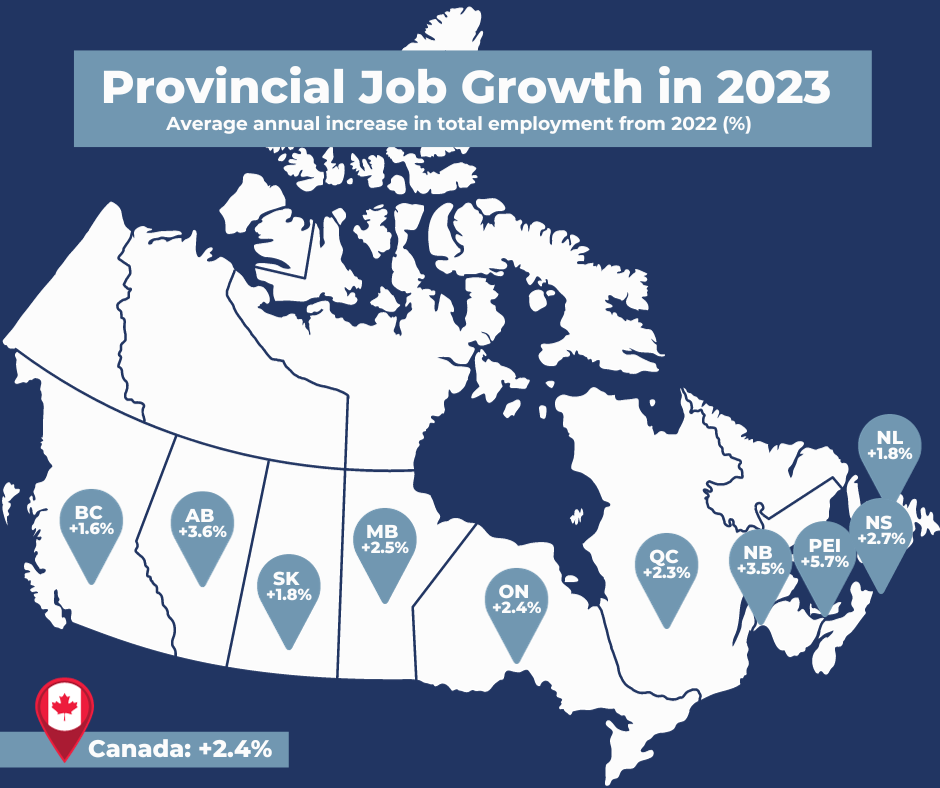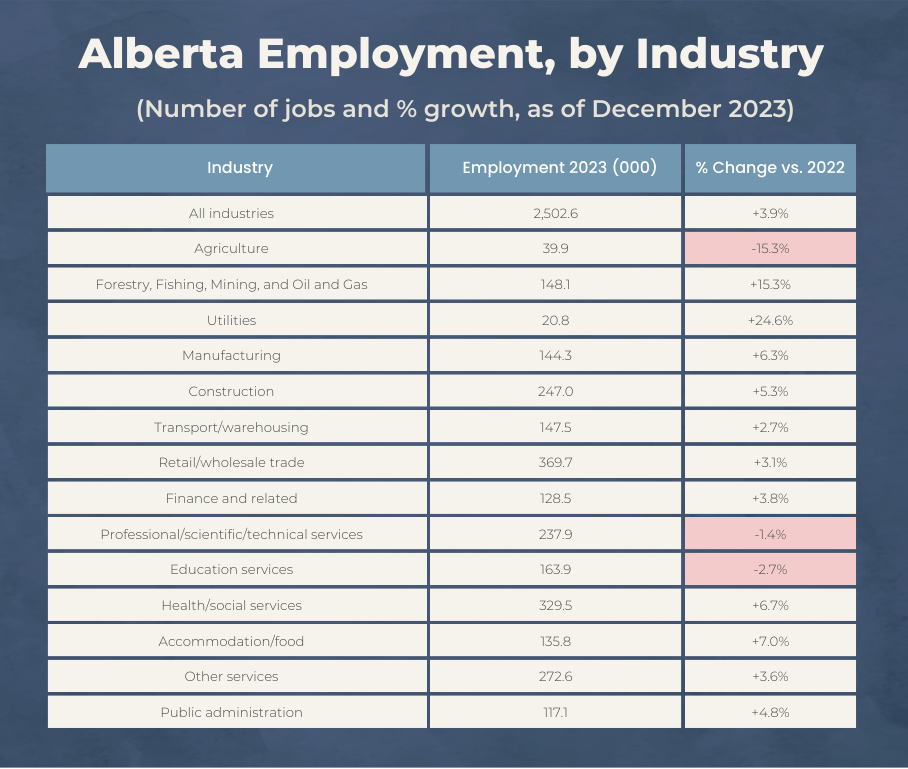By Jock Finlayson, ICBA Chief Economist
With the release of Statistics Canada’s December 2023 Labour Force Survey, we now have the data to assess the performance of the Alberta job market over the past year. Overall, Alberta fared well, posting the second fastest employment growth among the provinces (only tiny P.E.I. did better – see Figure 1). That said, Alberta’s unemployment rate edged higher in 2023 amid a jaw-dropping influx of newcomers and a rapidly expanding labour force.
2023 Snapshot
December saw a net increase of 6,700 jobs in Alberta, following the addition of 8,900 positions the month before. Recent job gains have been concentrated in the private sector. Less positively, all the new jobs in December were part-time, as full-time employment dipped slightly. Alberta’s unemployment rate rose to 6.3%, up from 5.9% in November.
For 2023 as a whole, Alberta added an impressive 85,000 jobs, equivalent to a 3.6% increase on an average annual basis. The average 2023 unemployment rate inched ahead by 0.1 points to 5.9%. This mainly reflects a 3.7% jump in the size of the labour force, fueled by record levels of international in-migration and significant inflows of interprovincial migrants – including sizable numbers from British Columbia.
Alberta’s employment rate – the share of the population aged 15 and over that’s employed– ended the year at 65.3%, the highest in the country. This speaks to the province’s relatively youthful population as well as the underlying vibrancy of the economy.
Industry Focus
Most Alberta industries boosted their payroll counts in 2023 (Table 1), with the biggest percentage increases coming in natural resources, utilities, accommodation/foodservices, manufacturing, and health care. A couple of industry sectors – surprisingly – saw employment dip last year: education and professional, scientific and technical services. In contrast to the picture in neighbouring B.C., the private sector is driving job creation in Alberta. Note that the job growth data in Table 1 compare employment levels in December 2023 with those in December 2022, while the provincial job growth numbers shown in Figure 1 are annual averages.
Employment in the Alberta construction sector advanced by 5.3% last year, amounting to some 12,400 additional positions on a year-over-year basis. Almost 250,000 Albertans are now employed in the construction industry, with the sector accounting for one in ten jobs in the province. Back in 2021, construction employment stood at 226,700. As of Q3 2023, construction had the second highest job vacancy rate of all Alberta industries, a sign that many construction companies continue to struggle to find enough qualified workers.
Conclusion
Judging by most labour market indicators, Alberta had a pretty good year in 2023. Strong net job creation was underpinned by the province’s revitalized energy sector, the need for more workers due to a surging population, a relatively attractive business environment (particularly by Canadian standards), and the expansion of business activity in several industry sectors other than oil and gas (e.g., petrochemicals, agri-food, and advanced technology). ICBA believes most of these motors of job creation will carry into 2024, even if the province’s economy loses a step as Canada stumbles into a probable recession.


